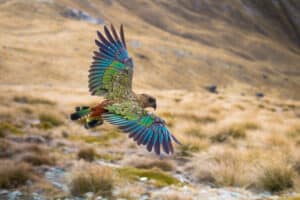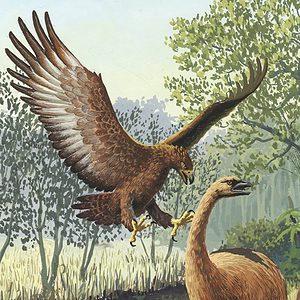According to the Kentucky Department of Fish and Wildlife, over 350 bird species make Kentucky their home. There’s lots to spot if you fancy some cold weather bird watching. Here are 26 birds that spend their winters in Kentucky.
1. House Finch
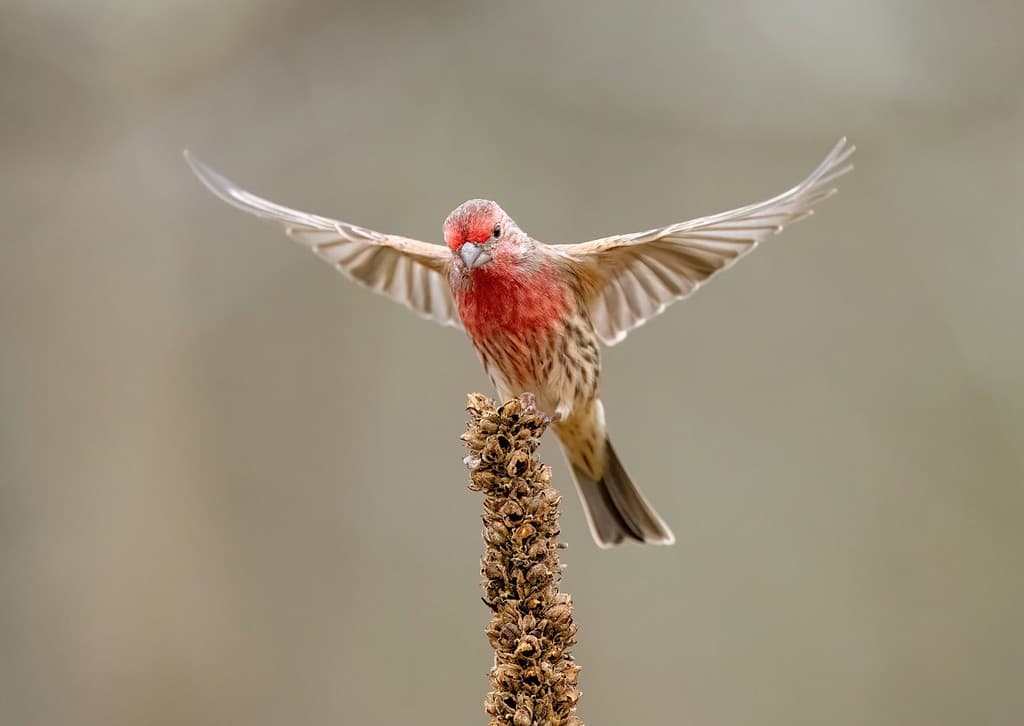
House finches live in noisy groups. Only males have red markings.
©Jeff Caverly/Shutterstock.com
Redheaded and breasted house finches are not native to Kentucky but they thrive there and spend their winters in parks, forest edges, and backyards, chattering in noisy groups.
Female house finches don’t have the red branding, they’re simply brown-streaked.
2. European Starling
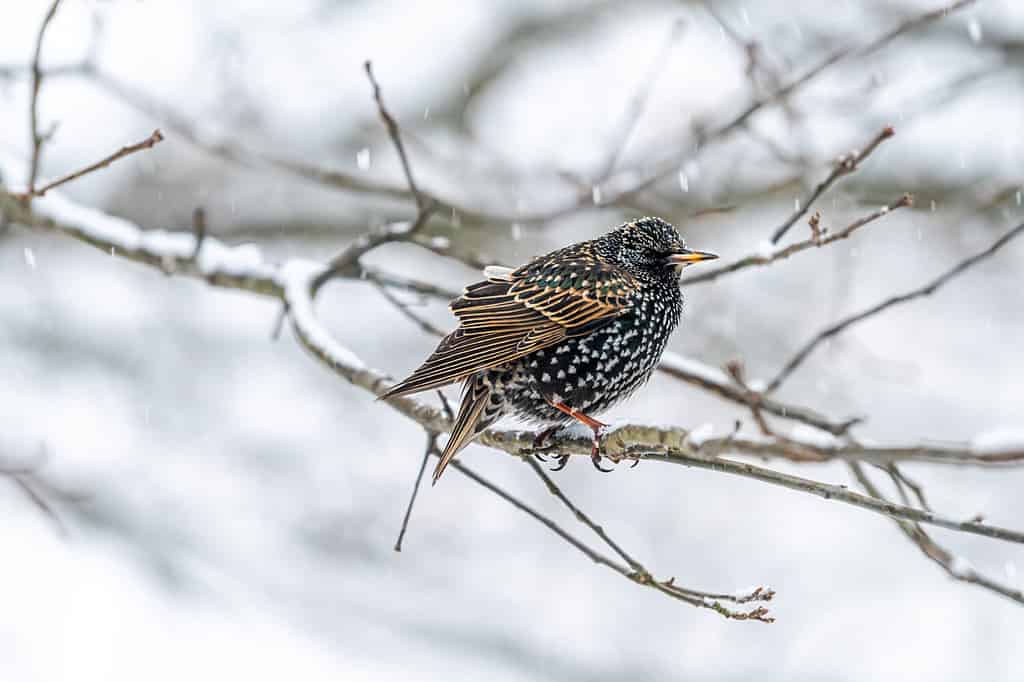
European starlings create huge murmerations at sunset.
©Kristi Blokhin/Shutterstock.com
Another non-native to Kentucky is the European starling. These iridescent beauties live in all of North America and flock in large numbers. At sunset, you might spot giant murmurations of swooping starlings before they roost.
3. Northern Flicker
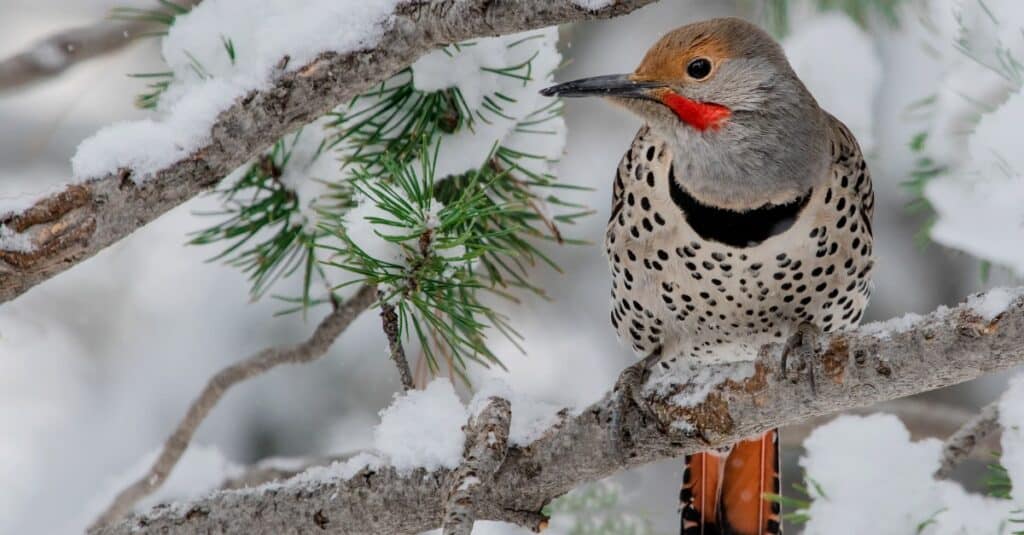
Eastern northern flickers have red throat flashes.
©iStock.com/DawnKey
Northern flickers are 10-12-inch-long brown woodpeckers with yellow and red flashes on the tail and wings. In the eastern states, flickers have yellow flashes, but in the western states, they’re red!
Flickers eat a wide variety of foods including seeds, nuts, fruits, and hatchlings.
4. Blue Jay
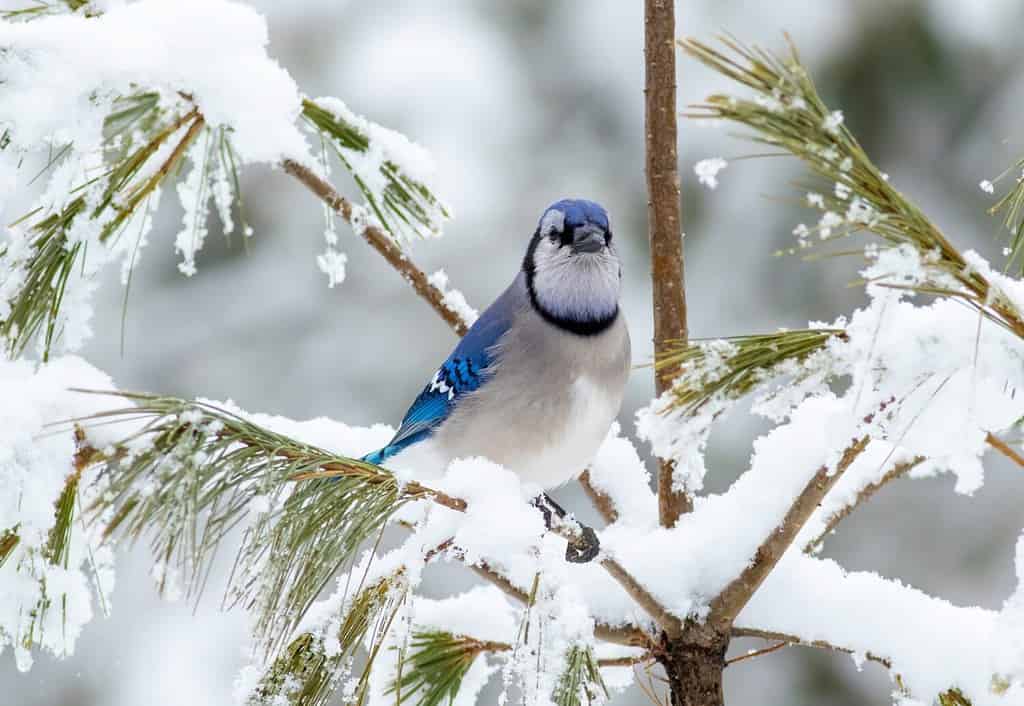
Bright blue jays eat seeds, nuts, insects, and nestlings.
©Matthew Jolley/Shutterstock.com
Blue jays spend winter in Kentucky in large noisy family groups. These intelligent corvids have blue crests, blue backs, and bright white undersides.
Anything goes when it comes to a blue jay’s diet, especially in Kentucky winters when temperatures drop and food is scarce.
5. Northern Cardinal
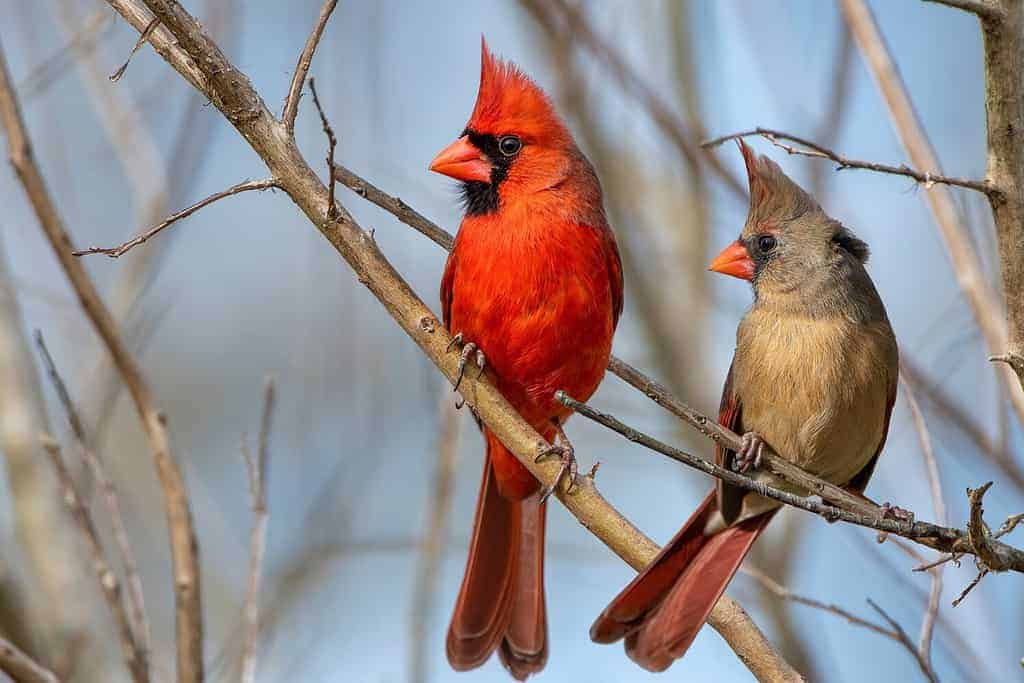
Male northern cardinals are much brighter than brown females.
©Bonnie Taylor Barry/Shutterstock.com
Cheerful red northern cardinals brighten up Kentucky winters. Males appear bright red, but females are duller. Both are tremendous nest defenders – they’ll even attack their reflections in chick season.
6. Eastern Bluebird
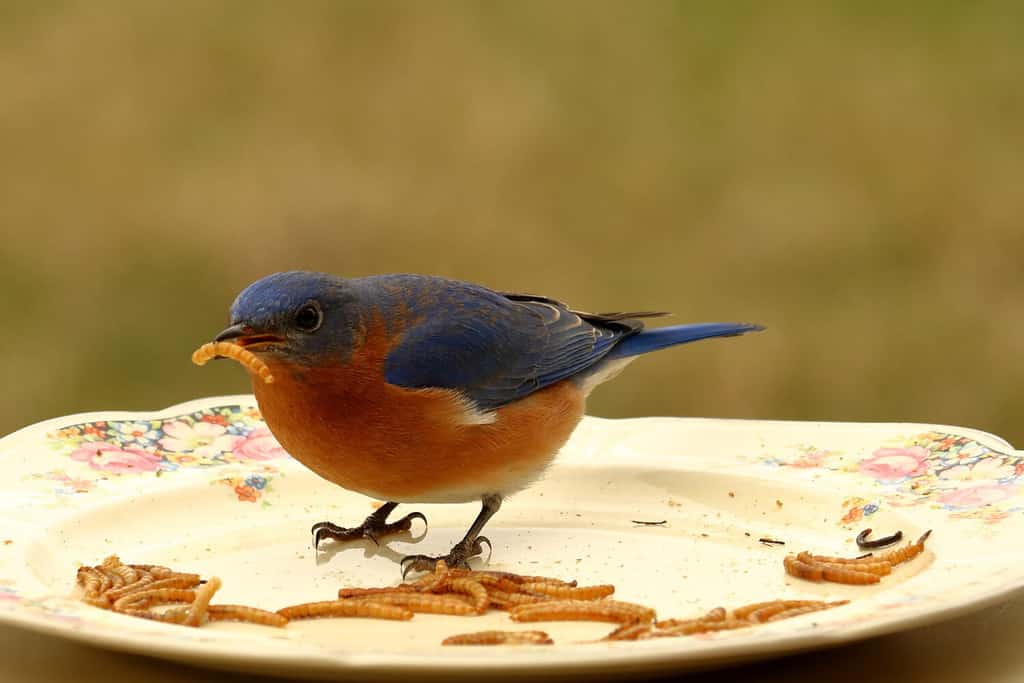
Eastern bluebirds predominantly eat insects. Meal and wax worms are good supplemental winter foods.
©Melody Mellinger/Shutterstock.com
Eastern bluebirds spend winters in Kentucky’s yards and meadows. They love to hunt insects by standing stock still on wires and posts before dive-bombing the hapless bugs.
As per their name, these attractive birds have blue plumage with red underbellies. Males are brighter than females and juveniles.
7. American Goldfinch
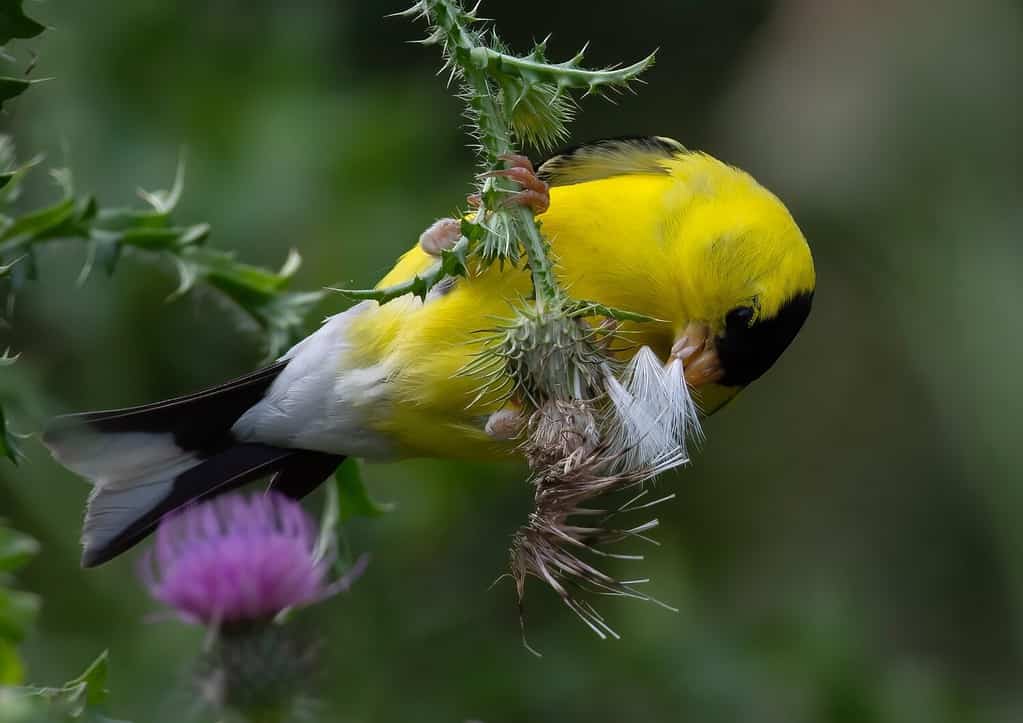
Weed seeds are popular American goldfinch foods in winter.
©gary powell/Shutterstock.com
American goldfinches are common winter birds in Kentucky. The bright males and duller females prefer weed-filled arable land, but take advantage of backyard feeders too.
Help cold goldfinches out with sunflower seeds and crushed peanuts.
8. Northern Mockingbird
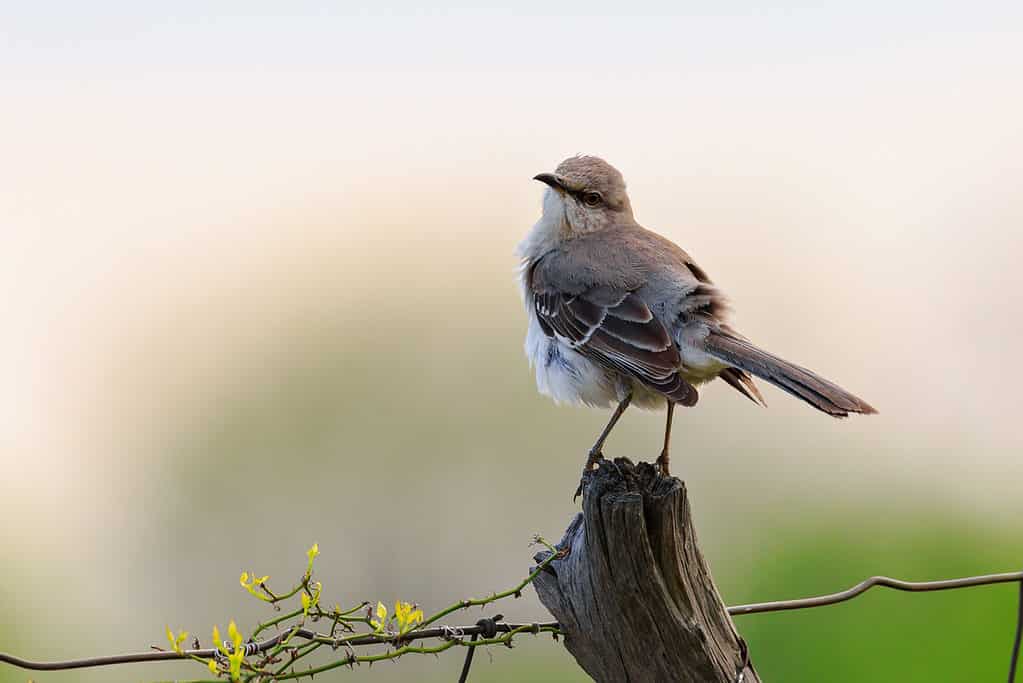
A northern mockingbird can recall over one hundred different songs.
©iStock.com/cmcneill17
Gray-brown northern mockingbirds have a wide song repertoire. Some males have been recorded singing over 100 different songs.
Mockingbirds are ground feeders, they search out fruit and seeds from woods, forests, arable land and back yards.
9. Mourning Dove
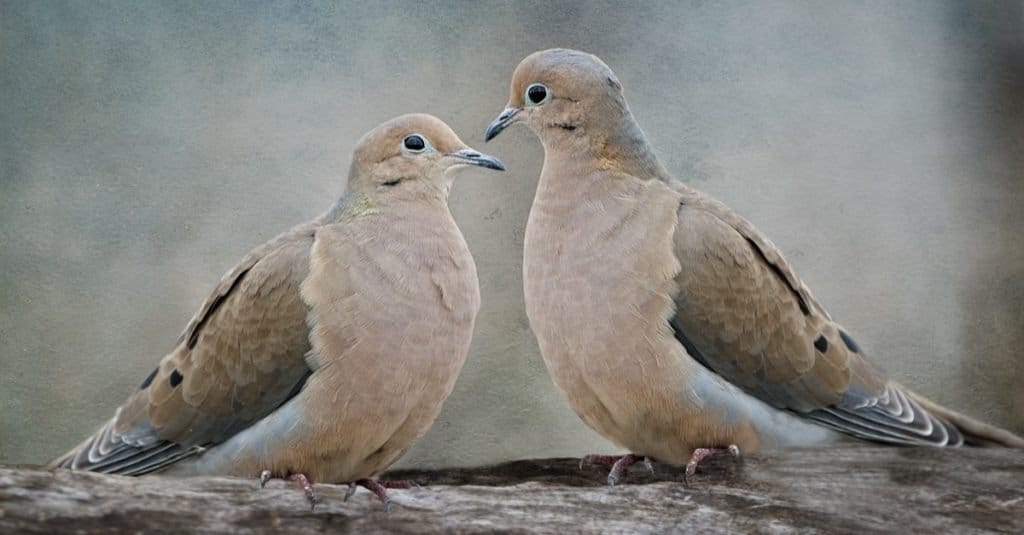
Mourning doves pair up for life. They’re often spotted in twos.
©Bonnie Taylor Barry/Shutterstock.com
9-13 inch long mourning doves usually show up in pairs. When Kentucky’s winter arrives they’re often spotted in bird baths and forging back yards for seeds.
Gentle mourning doves’ bobbing heads and chubby plumpness make them one of the most adorable birds around.
10. Red-bellied Woodpecker
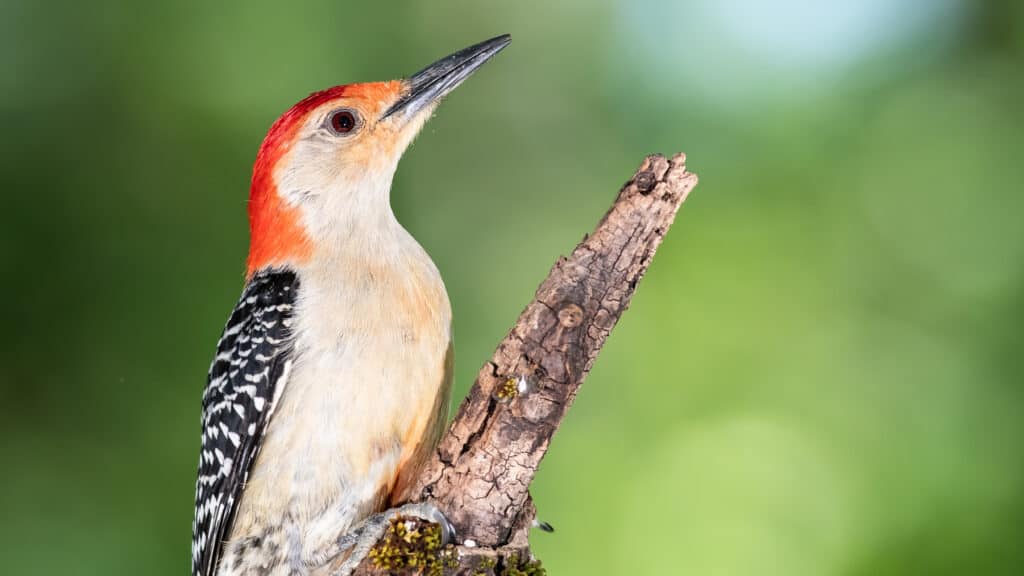
Small red-bellied woodpeckers have very faint red breast markings.
©rck_953/Shutterstock.com
Red-bellied woodpeckers have faint red bellies, but bright red caps, so they’re often confused with red-capped woodpeckers. However, the rosy bellied ones are much smaller. They don’t get larger than 8-10 inches long.
This woodpecker uses a barbed tongue and sticky spit to extract insects from tree crevices!
11. Song Sparrow
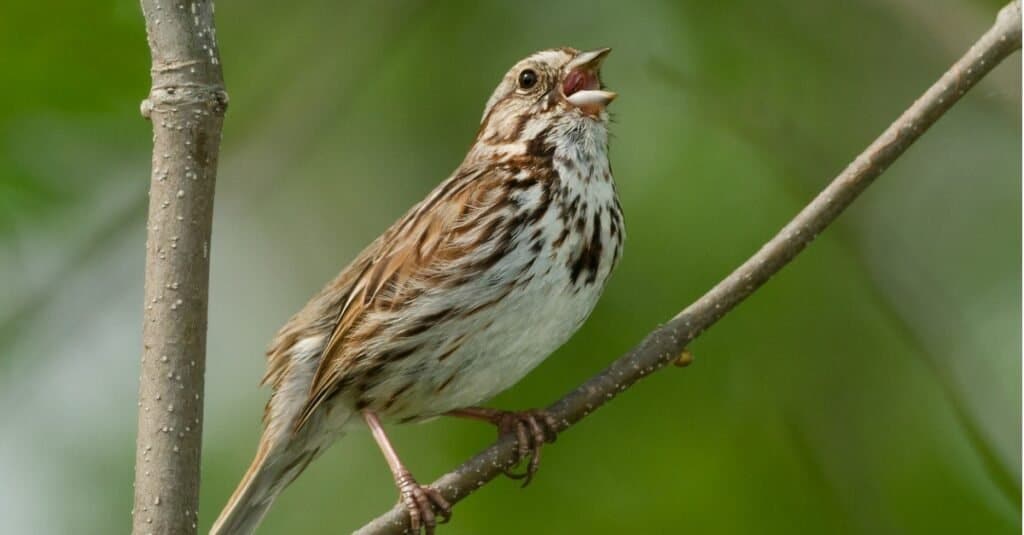
Song sparrows sing during nearly all their waking hours.
©iStock.com/PaulReevesPhotography
Gray and brown striped song sparrows blend into their environment like masters of disguise. Most Kentucky folks hear them, rather than spot them, because these diminutive 4-6 inch long birds sing almost constantly.
12. Dark-eyed Junco
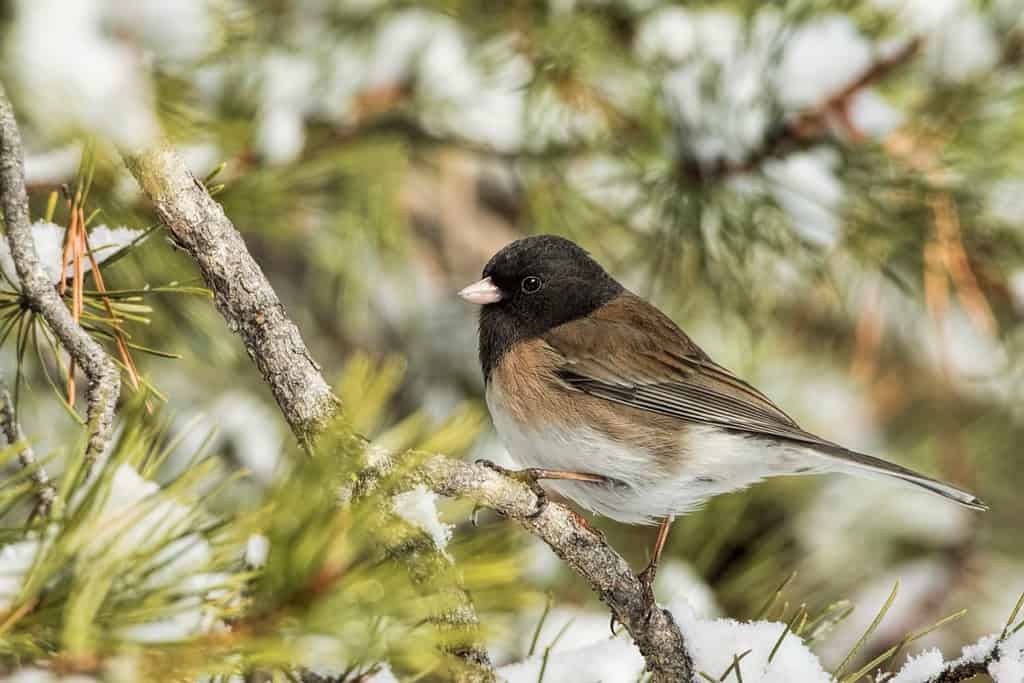
In Kentucky, dark eyed juncos have brown, black, and white stripes.
©Brett Swain/Shutterstock.com
In the eastern states dark-eyed juncos have slate-colored foliage, whereas in the east, they’re brown, black, and white striped.
Dark-eyed juncos live in Kentucky all year round foraging seeds, nuts, and insects from partially wooded areas and tree-filled backyards.
13. Red-tailed Hawk

Red-tailed hawks scan the ground for small prey such as rodents and lizards.
©Ondrej Prosicky/Shutterstock.com
With a distinctive wide, but short, red tail, this magnificent hawk is unmissable. It patrols Kentucky winter skies searching for small mammals, reptiles, and birds.
If you take a car journey, look over the passing fields and you may spot a red tailed hawk circling or perched on a fence post.
14. American Robin
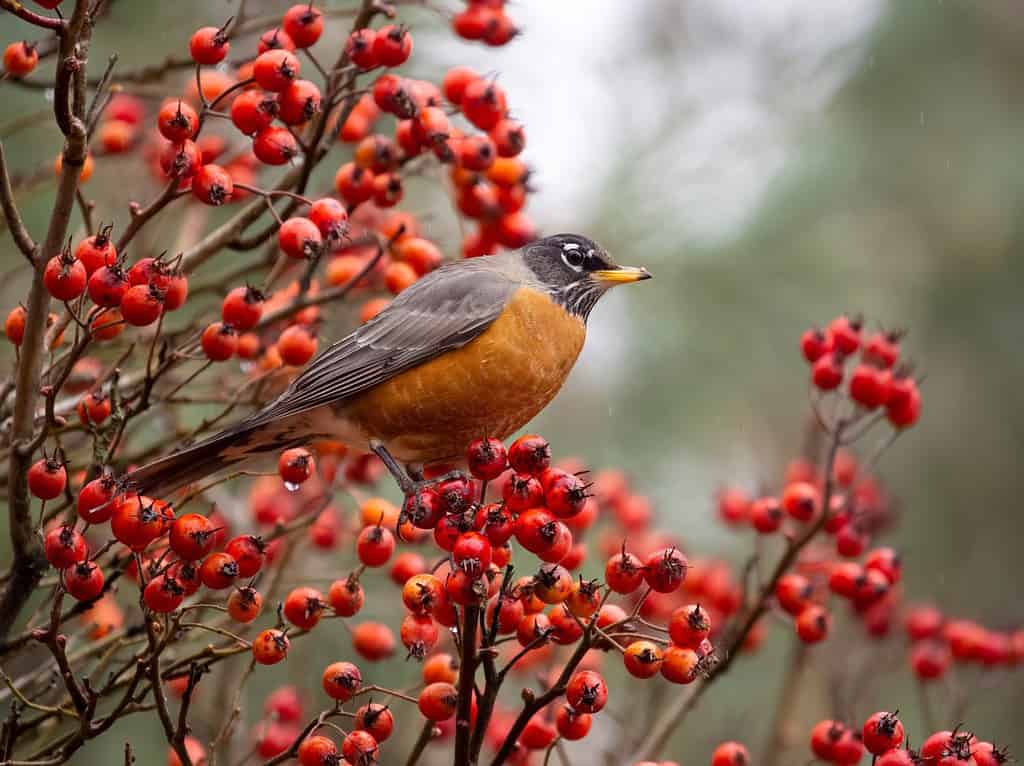
Common American robins eat seeds, nuts, and berries in winter.
©Erni/Shutterstock.com
Worms, insects, and snails provide American robins with plenty to eat, but winter times are hard. Pop a few meaty flavored cat biscuits, suet, or sunflower seeds outside to keep this common United States’ native happy.
15. Nuthatch
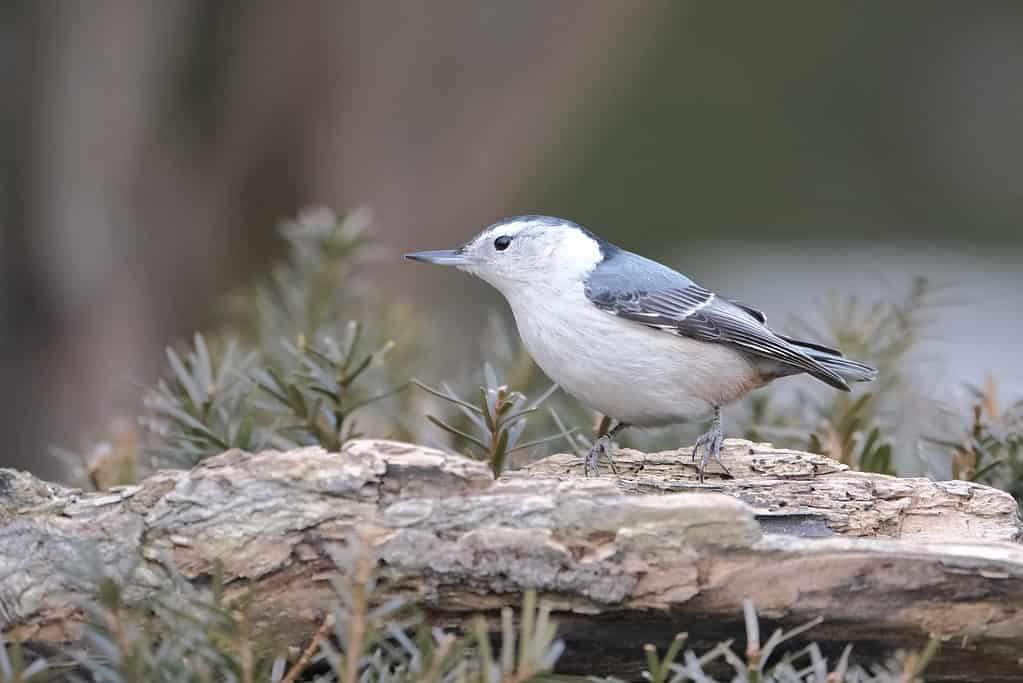
White-breasted nuthatches prefer deciduous woods and leafy backyards.
©Jim Nelson/Shutterstock.com
Busy little nuthatches usually appear upside down. They run up fences and tree trunks in search of insects and seeds at great speed.
Nuthatches live across the United States and two species live in Kentucky. The red-breasted nuthatch prefers coniferous forests, but the white-breasted tends to prefer deciduous woods.
16. Tufted Titmouse
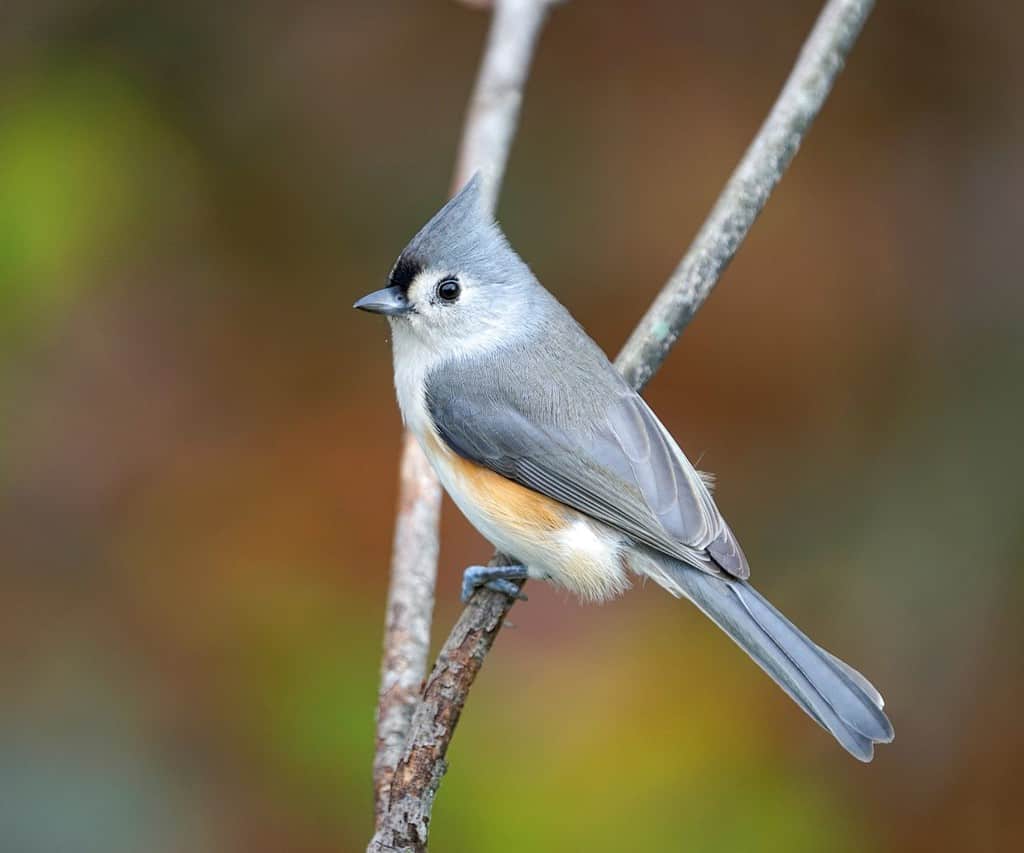
A feisty tufted titmouse will fight and bully songbirds for food.
©ND700/Shutterstock.com
A gray and white tufted titmouse is pretty adorable, but this little bird is hardcore. It has no problem chasing chickadees and finches away from food and stealing it for themselves. Despite their cute appearance, a tufted titmouse munches down on wasps and ants!
17. American Crow
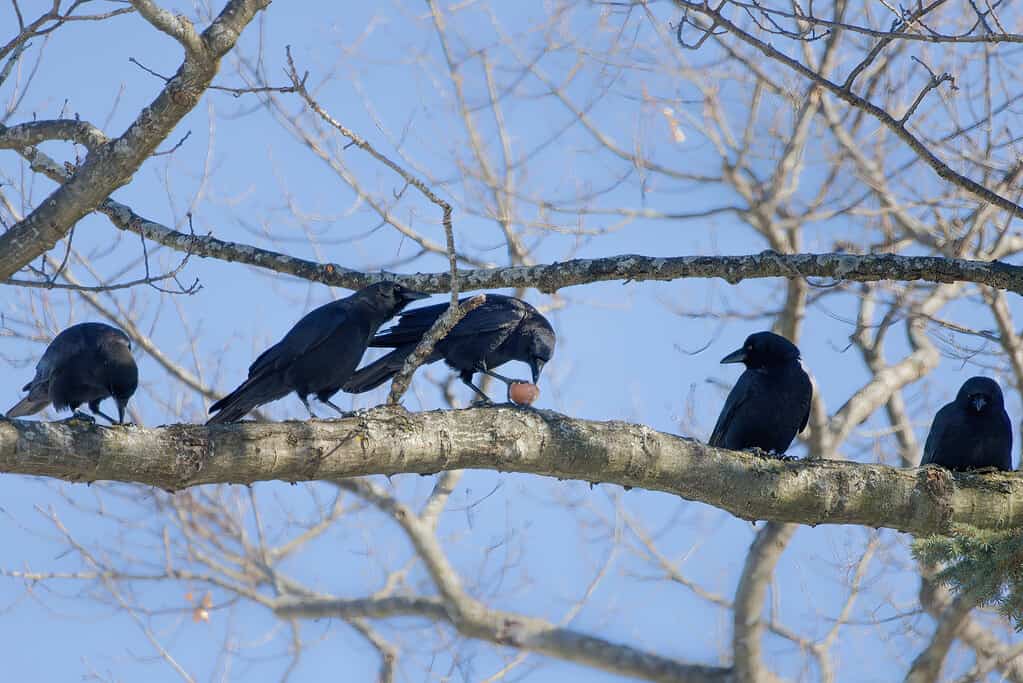
American crows live in family groups in Kentucky’s treetops.
©iStock.com/Karel Bock
Corvid American crows live in Kentucky all year round. They eat most foods from nuts to rodents to picnic remains.
Crows live in treetops and call “caw-caw” plus many clicks and purrs to communicate with extended family members.
18. Mallard
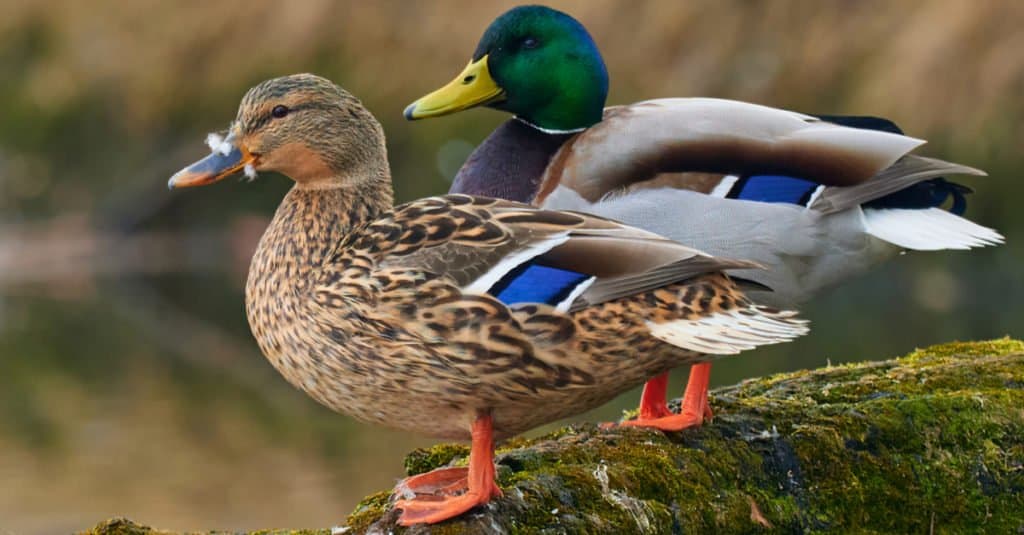
Male and female mallards both have a blue wing flash.
©Robert Adami/Shutterstock.com
Mallard ducks live on Kentucky’s waterways year-round. The males have iridescent green heads, bright blue wing flashes (called speculums), and cheerful yellow bills. Females are mottled brown with orange bills but they have the blue speculum too.
These often friendly ducks eat aquatic weeds and invertebrates. Rather than bread in winter, help them out with sweetcorn and peas.
19. House Sparrow
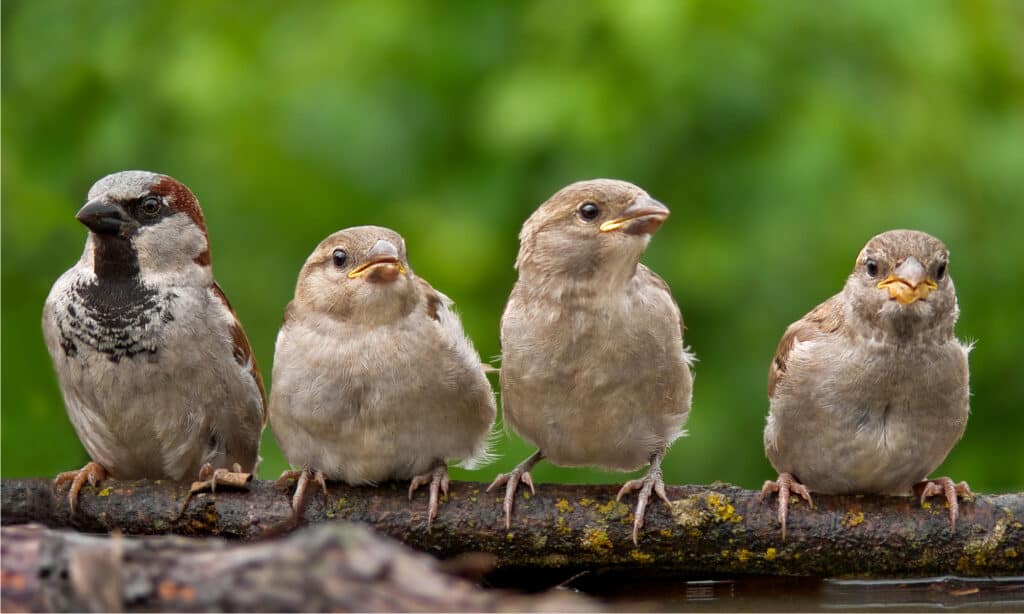
House sparrows live in noisy family groups. They spend winters in Kentucky.
©Nick Vorobey/Shutterstock.com
Introduced house sparrows spend winters in trees and hedgerows chattering and warning the group of danger. They eat seeds and nuts and benefit from backyard feeders.
Identify house sparrows by their brown and gray heads, white cheeks, and gray bellies
20. Northern Turkey Vulture
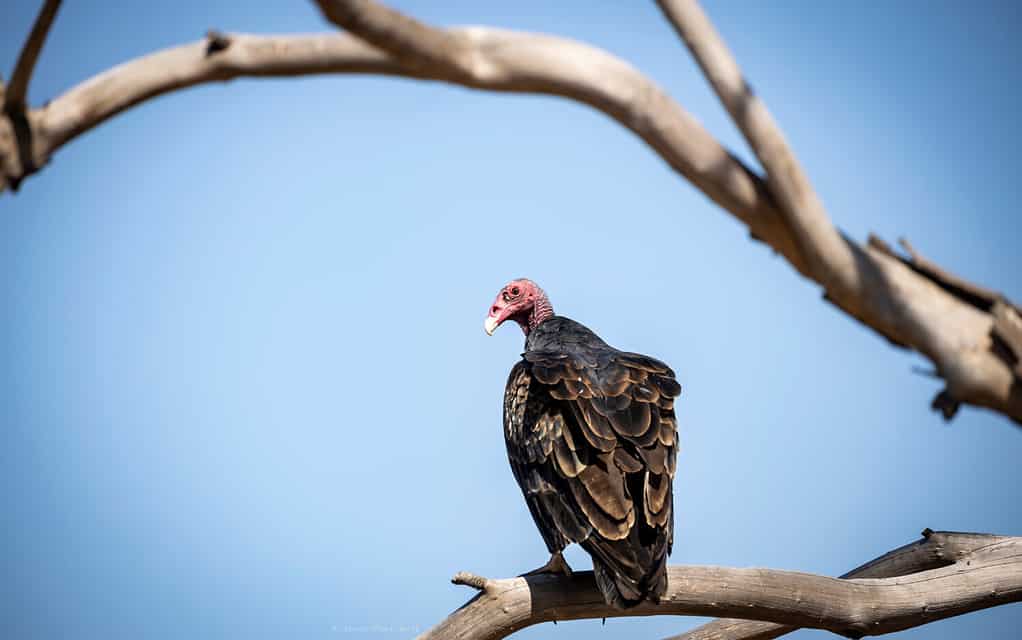
In flight, turkey vultures create a “V” shaped wing pattern.
©James-Paul Jacob/Shutterstock.com
Northern turkey vultures are easy to recognize with their bright red bald heads and massive body size. These birds reach 32 inches long and prefer to live near cliffs and hilltops to help take off. When flying, their wings form a distinctive “V” shape.
Carrion-eating turkey vultures roost in woodland, scrublands, and wetlands across the United States.
21. Downy Woodpecker
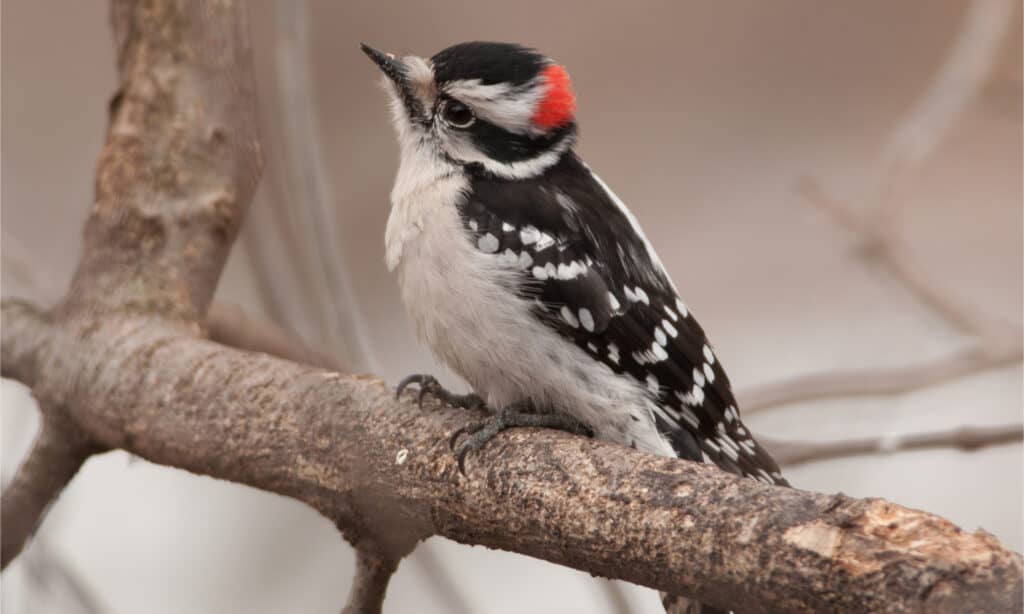
Downy woodpeckers only reach 5-7 inches long. They flock with small songbirds.
©Gerald A. DeBoer/Shutterstock.com
Black and white 5-7 inch long downy woodpeckers have red heads and fluffy, downy foliage as per their name.
They eat acorns, insects, seeds, and snails, and enjoy flocking with songbird groups like titmouses and chickadees.
22. Chickadee
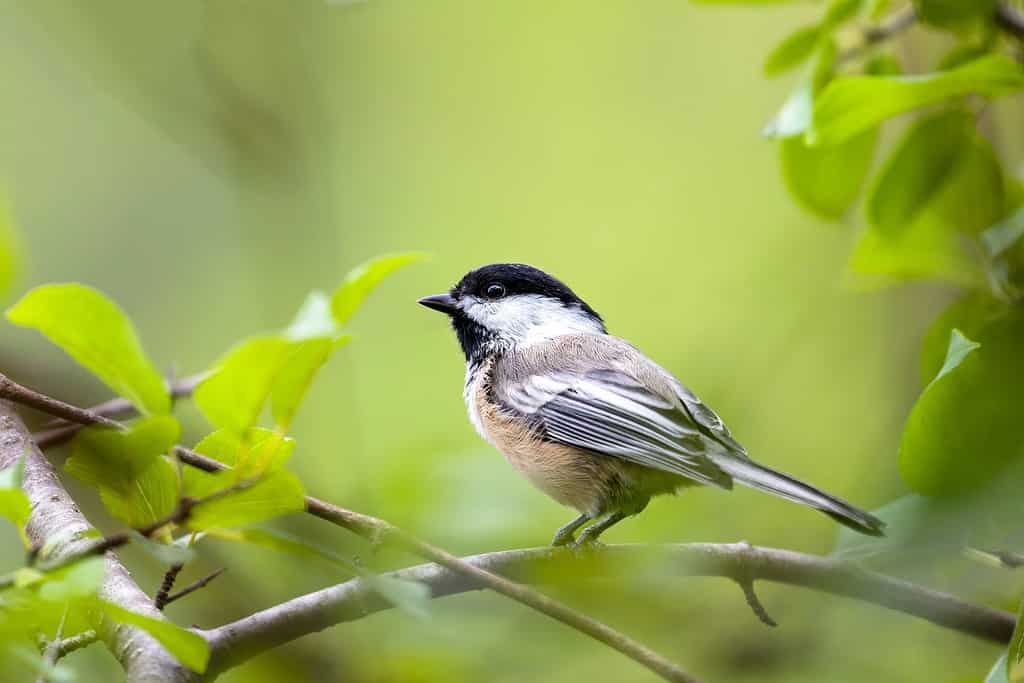
Black capped chickadees prey on insects and larvae, but visit birdfeeders, too.
©Manu M Nair/Shutterstock.com
Tiny chickadees only reach a diminutive four inches long. Their white cheeks and bellies contrast with gray feathers and black caps, so they stand out in backyards.
Chickadees eat insects, larvae, seeds and nuts. In colds winters, suet and seed feeders are a lifeline.
23. Carolina Wren
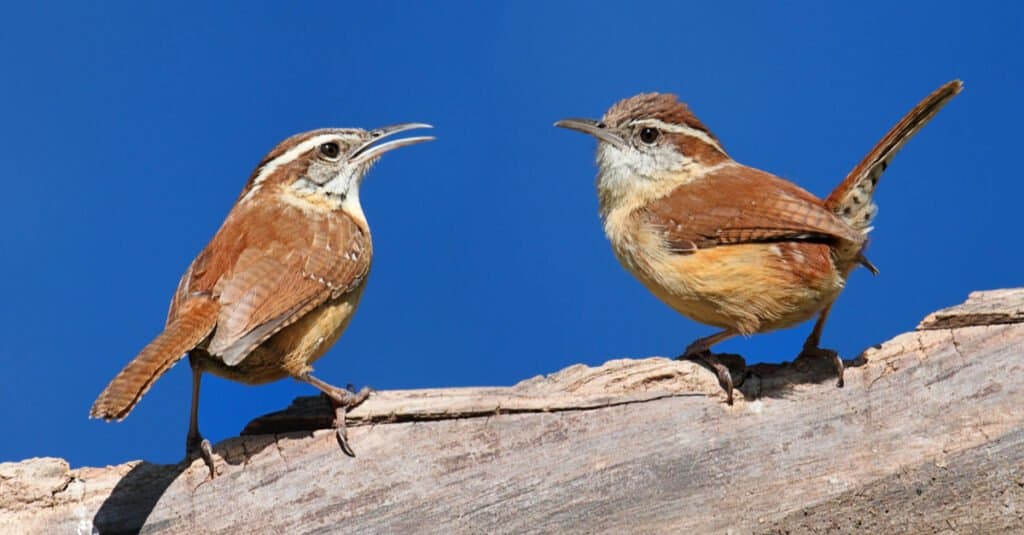
Carolina wrens make a distinctive “tee-kettle” call.
©Steve Byland/Shutterstock.com
Mini Carolina wrens spend winters in Kentucky, and their distinctive round bodies with vertical short tails make them an easy-to-recognize yard bird. If in doubt, listen out for their “tee-kettle” call note. Wrens are shy birds, but in the winter months, they’ll leave hedgerows to investigate seed feeders.
24. White-throated Sparrow
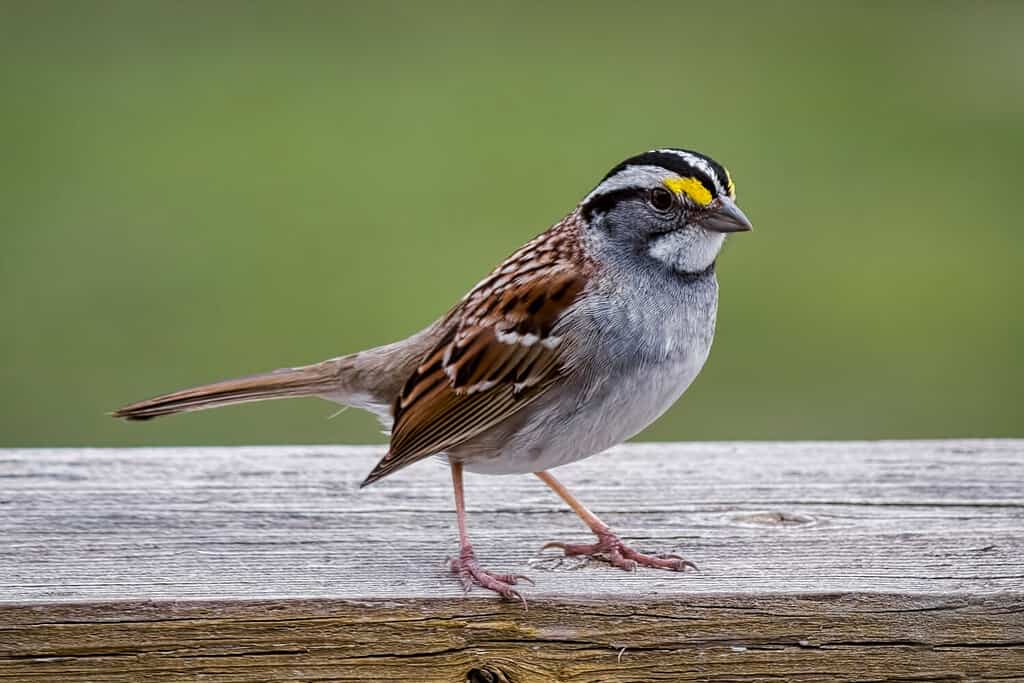
White-throated sparrows have a distinctive yellow flash above their eyes.
©Fiona M. Donnelly/Shutterstock.com
These pretty little sparrows have white throats, black and white striped heads, and yellow face flashes. They spend winters in Kentucky seeking out insects, berries, and grass seeds.
25. Brown-Headed Cowbird
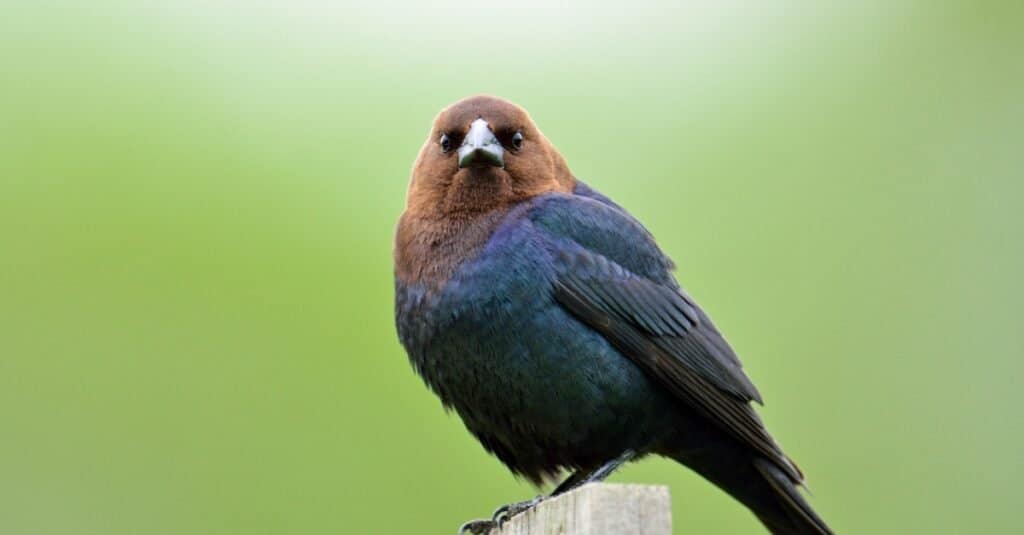
The brown-headed cowbird lays eggs in other birds’ nests.
©iStock.com/BrianEKushner
Brown-headed cowbird males have glossy black plumage and deep brown heads, but females are all dark brown. This blackbird-sized brood parasite lays its eggs in other birds’ nests to avoid the stress of raising youngsters.
26. Common Loon
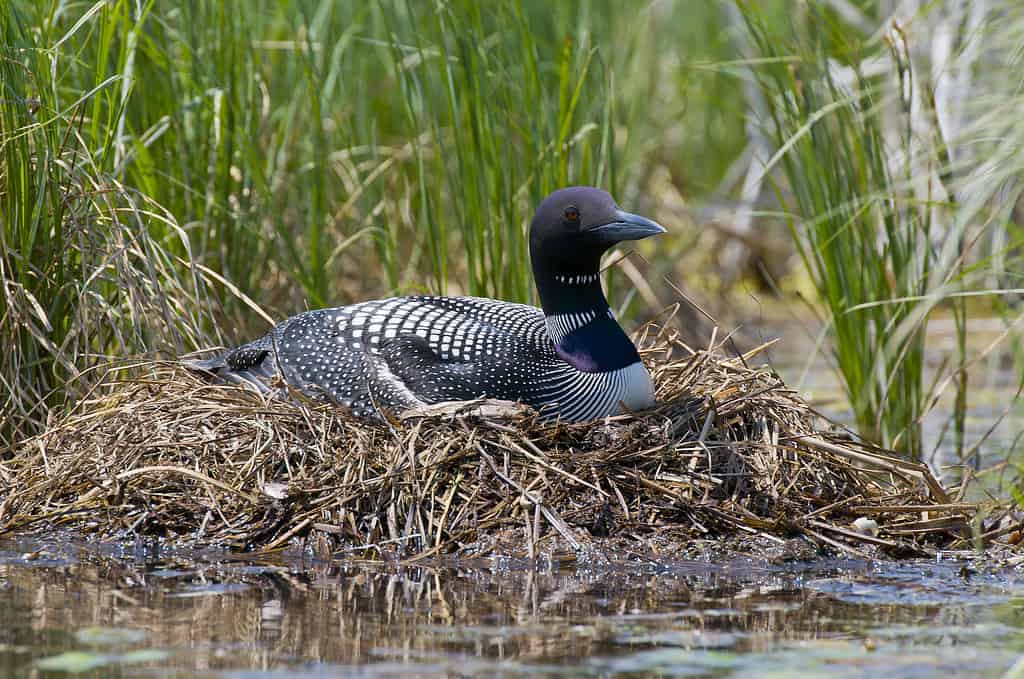
Common loons hunt fish underwater and sometimes swallow them whole before surfacing.
©SteveOehlenschlager/iStock via Getty Images
This Kentucky water bird is a fast swimmer that chases fish with a high success rate. Their bones are solid to help weigh them down on fish dives. To stop other birds stealing their hard-won dinner, loons swallow fish whole whilst still underwater!
The photo featured at the top of this post is © Lester Graham/Shutterstock.com
Thank you for reading! Have some feedback for us? Contact the AZ Animals editorial team.



